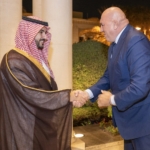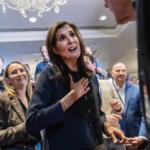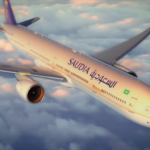In the past few weeks, Saudi Arabia has been at the centre of intense diplomatic activities, mainly directed to make significant economic deals. It is not a coincidence that some of the actors involved are the three biggest world economies: The United States, China and Japan. Indeed, while King Salman bin Abdulaziz Al Saud has taken a six-week trip in Asia, His Energy Minister Khalid-Al Falin headed for in Washington, to meet the US President Trump at the White House.
Such an intense effort goes beyond the normal diplomatic relations, especially given that the King’s visit in Japan has been the first visit to the country by a monarch of the Middle East oil-rich countries in the past fifty years. So, what is behind this busy agenda? First and foremost, oil. For decades, the vast availability of oil combined with the harsh regulations imposed by the monarchy -which did not encourage foreign companies entering Saudi markets- have made oil the country’s one and only source of income.
However, the recent drop in oil price has been worrying the oil-rich monarchy. IMF projection for Saudi economic growth is not more encouraging, sharply foreseeing a drop from 2% to 0.4% this year. Hence, Saudi Arabia is exploring alternative economic paths, which include attracting foreign capitals and developing other industrial sectors. The short-term strategy, indeed, sets investments and infrastructure maintenance, especially electricity and transport networks, as first priorities. In a long-term perspective, “Vision 2030” expresses goals and expectations of the nation, based on three strong pillars: leading role in the Arab and Islamic word, become a global investment powerhouse and become a global hub, thus connecting Asia, Africa and Europe.
Having said that, Saudi effort to diversify its economy is more understandable. However, it is important to analyse also the political implications that these visits and commercial agreements may have.
Let’s start with Japan, the first trip of King Salman. As mentioned above, the Saudi King arrival in the Asian island is not an ordinary event, though the Kingdom is the largest provider of oil export and the two countries have friendly relationships. But this time King Salman has decided to travel all the way to the East and meet the Japanese Prime Minister Shinzo Abe. The two leaders, then, agreed and signed the “Saudi-Japan Vision 2030”, a governmental project that aims to enhance the cooperation between the two countries.
By developing this project, Saudi Arabia and Japan will become equal strategic partners and Japanese companies will be given a designated zone in Saudi Arabia to allow fluid entry into the country, thus facilitating the economic partnership. The developmental projects outlined in the document include both government-related and private sector ones.
Notable names emerge with the private projects. Toyota is opting to produce cars and components in Saudi Arabia; Toyobo will cooperate in technological developments of desalination plants and several banks -i.e. Mitsubishi Tokyo UFJ Bank- will be promoting investments in the Kingdom, while Softbank Group is planning to create investment funds worth 25$ billion for technological investments.
Therefore, Japan raises as a key actor to diversify Saudi Arabian economy. However, there are also political reasons behind this stronger partnership. The Japanese government is trying to contribute to Saudi Arabia political and economic stability, which is a fundamental factor to maintain the stability in the region. The competition between Saudi Arabia and Iran for the leadership in the Middle East has been deteriorating security and stability in the area for a long time. Japan has friendly relations with both countries and welcomes a productive dialogue between the two powers. Helping Saudi Arabia to strengthen its economy is indeed essential to maintain some balance between the two nations, also given that the relationship with the US -traditional ally and a core pillar of Saudi foreign policy- has recently gone through a hard time.
Moving forward, or better said westwards, King Salman reached China, the world’s second-largest oil consumer as well as the third largest economy. Similarly, as for Japan, the Sunni monarchy is the primary source of China’s energy demand. The two countries have sharply deepened their relationship by signing up to 65$ billion economic and trade deals. Within this framework, the countries are promoting manufacturing and energy sectors, included downstream oil opportunities. Moreover, the deals include a Memorandum of Understanding (MoU) between the oil firm Saudi Aramco and China North Industries Group Corp (Norinco) to look into the construction of refining and chemical plants in China. Meanwhile, Sinopec and Saudi Basic Industries Corp (SABIC) agreed upon the development of petrochemical projects both in China and Saudi Arabia.
The stronger economic relationship comes as mutually beneficial for the countries. On the one hand, Saudi Arabia may see new trade opportunities in sectors other than oil, while confirming his position as key energy partner for China; on the other, China can benefit from further Saudi investments in its markets but also for the kingdom’s strategic location in the Middle East. Indeed, Saudi political, religious and economic influence in the region is a key factor for the Chinese “One belt, one road” initiative, that aims to build connectivity and cooperation between Eurasia and China.
However, Saudi Arabia also has its strategic advantages. From a security perspective, Saudi Arabia has always strongly relied on the US and its military presence in the Gulf. However, under Obama’s administration concerns and disappointments arose, as the US failed to show a firm determination in dealing with Iranian attempts to further develop its nuclear capabilities, thus jeopardising the stability of the region. In the past, China has refrained from interfering in the Middle East issues, trying to keep a neutral position between the two rivals, Saudi Arabia and Iran and stressing the importance of close consultation. Some changes occurred, though.
In 2016, China backed Bashar al-Assad, offering its military cooperation and supported Yemen’s government against the Iran-backed Houthi rebels (A Saudi-led military coalition supports Yemen’s government). Lastly, the Chinese government signed an agreement to set the first factory for Chinese hunter-killer aerial drones in Saudi Arabia, first in the Middle East.
Is China going to replace the US in the Middle East? Perhaps it is still too early to make such an assumption, especially given the new development in Syria. However, it seems that China may and would like to play a more influential role in promoting security and stability in the region, having all the means (military and economic) to do it.
And here comes the third core piece of this puzzle: The United States. As mentioned above, Obama administration has seriously challenged the relationship between the West power and the Saudi monarchy. The major issue was the multilateral nuclear deal signed with Iran, which allowed Iran to sell its vast oil supplies more freely and solicit investment in its energy industry, increasing competition with top oil exporter Saudi Arabia. However, the new presidency has made clear its approach toward Iran, by immediately imposing additional sanctions on entities involved in the nuclear program.
Saudi Arabia visit to Washington seems to open a new phase in US-Saudi relations. While the King was busy in Asia, Saudi Energy Minister Khalid Al-Falih and the Deputy Crowne Prince Mohammed bin Salman met President Donald Trump at the White House. As Saudi minister pointed out, US-Saudi relationship is one of the most central to global stability and now seems to be better than ever. Indeed, the two countries again align on all the major issues, such as confronting Iranian aggression and fighting ISIS, but also enjoy the benefit of a closer personal bond between his royal highness, the Deputy Crown Prince and President Trump.
At the economic level, new investment programs are focused on energy, industry, infrastructure and technology. According to the Financial Times, Saudi Arabia is interested in investing up to $200 billion in US infrastructure, which is a core pillar of Trump’s agenda. As Falih explains, “The infrastructure program of President Trump and his administration is something that we’re interested in because it broadens our portfolio and it opens a new channel for secure, low-risk yet healthy return investments that we seek”.
These are only some of the economic negotiations and deals that Saudi Arabia is currently conducting, but they help to understand the new economic course of the country. They represent, indeed, a “Plan B” against the drop of oil revenue and the chance to reinforce and diversify the economic capabilities of the country, which can rely on resources other than oil, such as phosphate, gold, uranium and other minerals. Developing new sectors will also attract foreign investments and create new job opportunities for a young and ambitious local population.
One of the risks of such a massive network of economic deals is the reaction that other partners may have to commitments taken with other countries. As known, commercial arrangements have political consequences and impacts. Therefore, one of the main challenges for Saudi leaders will be to pursue its economic goals, while balancing its position toward all his major allies and friend nations, especially when some of its partners are not the best friends ever.
An obvious example is China. Despite years of lack of interest for Middle East issues, China is now trying to play a bigger role in the region, as the support in Yemen and Syria but also the Chinese warship tour in the Arab Gulf (January 2017) prove. Saudi Arabia welcomes this kind of assistance, as it can help to reduce Iran’s influence in the region. However, it is important not to upset a key and historical ally, the United States. As the new administration has shown a different approach toward the main regional issues -Syria and Iran- it might be a strategic mistake to bond too closely to the new player. Indeed, this might give the impression that a new guarantor of security in the Middle East has replaced the United States, a change that President Trump may not be entirely happy with.
In conclusion, the diversification of Saudi Arabia’s economy is a smart and necessary move to make. However, it goes beyond the economic sphere, as it also shapes Saudi political posture, as a regional power but also among the biggest foreign nations involved in the Middle East political struggle. It appears that the country is trying to bond closer ties with all those powers that have more interests -but also economic and military capabilities- influencing the stability and security of the region, thus trying to get the strongest support possible against its main rival, Iran. China and USA are on the spot but do not forget Russia, which has developed bilateral ties with Saudi Arabia in the past few years and has strong political and strategic interests in the Middle East. Lastly, a key factor will be the development of the Syrian war, especially after the US Tomahawk missile strike on an air base in Syria, very well welcomed by Riyadh.
It is likely that the future economic strategy of the Kingdom will follow the political and strategic needs of the country, confirming once again the strong interrelation between economic and political dimensions, but also the importance of a robust and independent economy to maintain an influential and leading role in the region.
Paola Fratantoni







